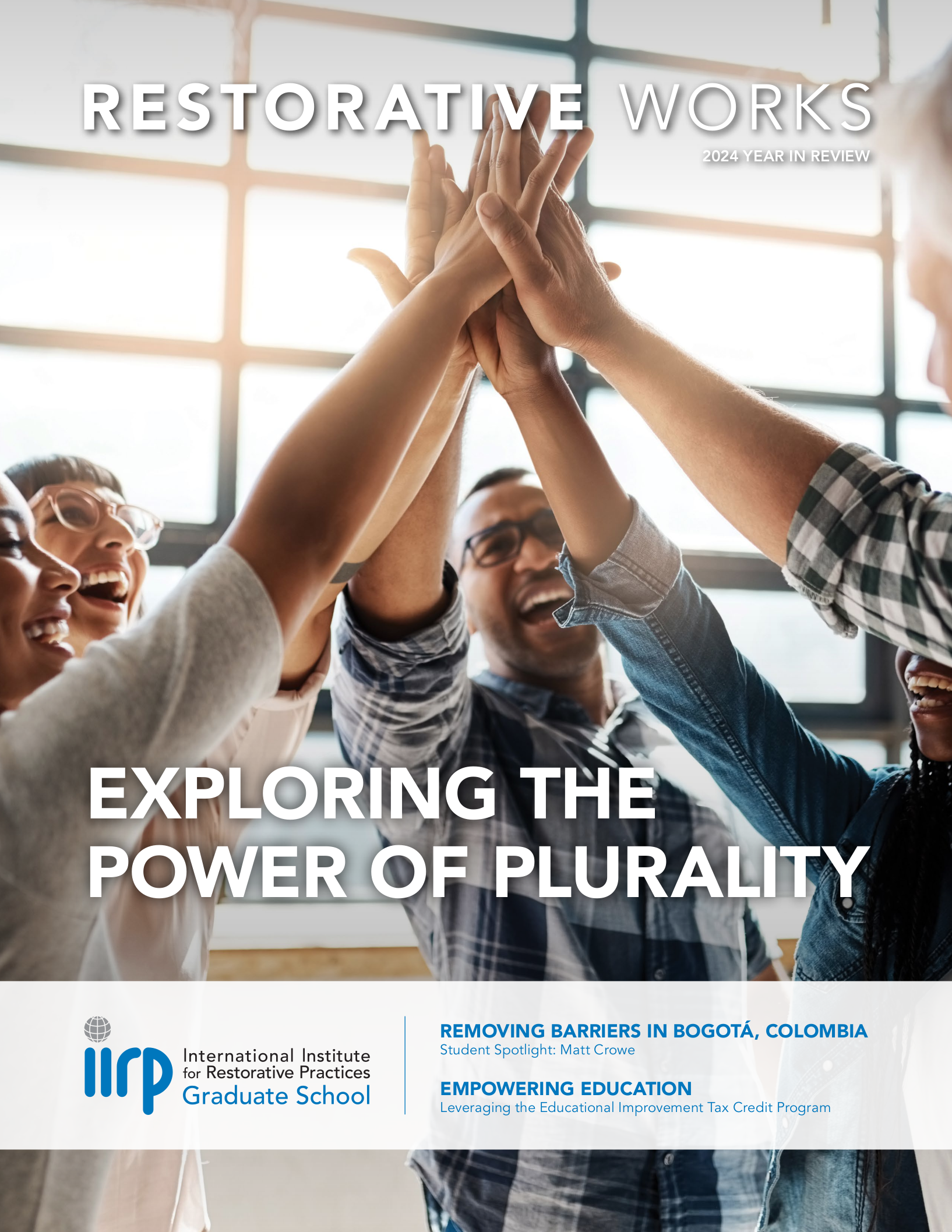 From right to left, Claire de Mézerville López (Costa Rica), Kay Pranis (U.S.), John Braithwaite, Ph.D. (Australia), Miguel Tello (Costa Rica) and Manuel Delgado Chu (Peru) On Thursday and Friday, March 5 and 6, IIRP Latin America held an international conference, Congreso Justicia y Educación con Visión Restaurativa (Justice and Education with a Restorative Vision) in Mexico City. Over 100 participants from 11 different countries (Brazil, Chile, Peru, Colombia, Costa Rica, Honduras, El Salvador, Guatemala, Mexico, Spain and the United States) gathered to share experiences and programs related to how restorative practices and restorative justice can help us to find hope in our Latin American region.
From right to left, Claire de Mézerville López (Costa Rica), Kay Pranis (U.S.), John Braithwaite, Ph.D. (Australia), Miguel Tello (Costa Rica) and Manuel Delgado Chu (Peru) On Thursday and Friday, March 5 and 6, IIRP Latin America held an international conference, Congreso Justicia y Educación con Visión Restaurativa (Justice and Education with a Restorative Vision) in Mexico City. Over 100 participants from 11 different countries (Brazil, Chile, Peru, Colombia, Costa Rica, Honduras, El Salvador, Guatemala, Mexico, Spain and the United States) gathered to share experiences and programs related to how restorative practices and restorative justice can help us to find hope in our Latin American region.
Our keynote speaker, John Braithwaite, Ph.D., Distinguished Professor at Australia National University and IIRP Honorary Trustee, inspired and encouraged participants on Thursday morning, calling for them to seek points of hope and to "aim breathtakingly high."
During the conference, 40 breakout sessions were held on topics including peace circles following the establishment of the peace agreement in Colombia; restorative approaches in Mexican schools; a restorative approach for supporting youth with drug addiction in Brazil; restorative practices with indigenous communities in Peru; and restorative responses for communities struck by natural disasters in Guatemala, along with many other topics.
The main plenary session on Friday morning featured four keynote speakers:
 Carlos Alvarez from the United States presented on research that explains how restorative justice impacts the nervous system of people who have experienced trauma, making the case that restorative conferences provide an appropriate emotional space for conflict resolution.
Carlos Alvarez from the United States presented on research that explains how restorative justice impacts the nervous system of people who have experienced trauma, making the case that restorative conferences provide an appropriate emotional space for conflict resolution.
Magistrate Gerardo Rubén Alfaro presented on the experience of facilitating restorative conferences as a fully embedded strategy within Costa Rica's criminal justice system.
Karla Quirós Robles, a representative of Costa Rica's Ministry of Education, presented on how restorative practices is becoming a necessary approach for public schools.
Finally, Dr. Braithwaite challenged us to understand that restorative justice needs to begin with a focus on children and youth, finding better ways to repair harm, build stronger communities and develop healthier relationships. We must lead children, he said, so that soon enough they will lead us in ways that we cannot yet imagine.
After two full days, the conference concluded with a final plenary session. Participants expressed the importance of continuing to build a community of practitioners, noting that those of us at the conference are certainly not alone, and that our diversity of thought and practice make us stronger. We left ready to aim breathtakingly high!

